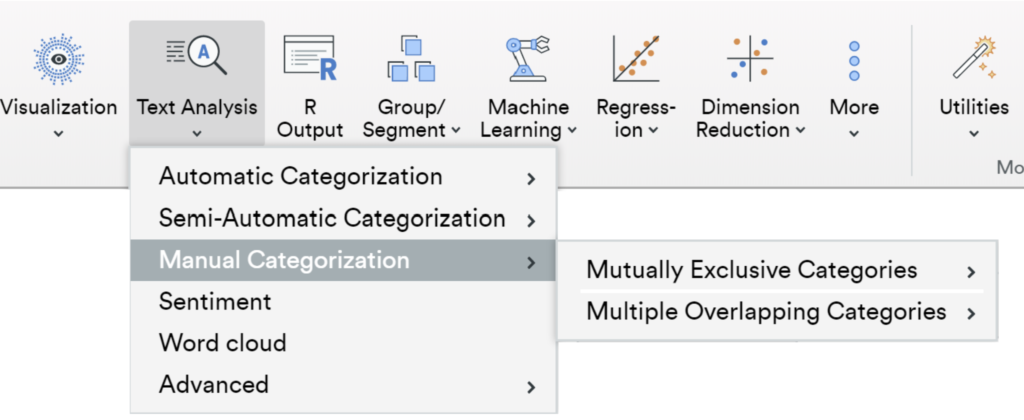
Mutually Exclusive Categories means each of the text responses will be assigned to a single category. It's appropriate if the data is relatively simple and each response really only captures one idea. For example:
- You asked respondents in a survey to give you the name of a brand (perhaps their favorite brand or what brand first comes to mind)
- You want to allocate a response into only one category (perhaps in terms of sentiment, such as positive/neutral/negative or to the main idea of the response)
Mutually Exclusive Categories will result in one new categorical variable.
Multiple Overlapping Categories is used when each piece of text represents more than one idea, preference, or opinion. Typically it is used when the text information is longer than a few words or a single sentence. Examples include:
- You asked in a survey for a completely open-ended response, such as describing a brand, the reasons for giving a rating on a scale, and so forth
- Respondents give you multiple brand names in the one variable
- Spontaneous awareness results are recorded across multiple variables - one for each brand
- You are analyzing a blog post or a social media post, and there are lots of possible themes within the text that you want to pull out and analyze by
Multiple Overlapping Categories results in multiple new variables combined as a variable set (a Binary - Multi).
- It is binary because each can either have a Yes/No (1 or 0) if the response is associated with the category or not.
For a worked example of how to categorize into Multiple Overlapping Categories, see this blog post.





